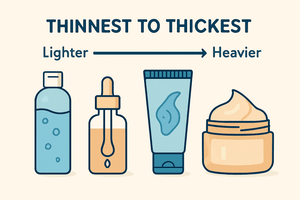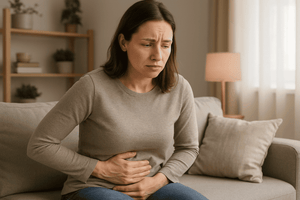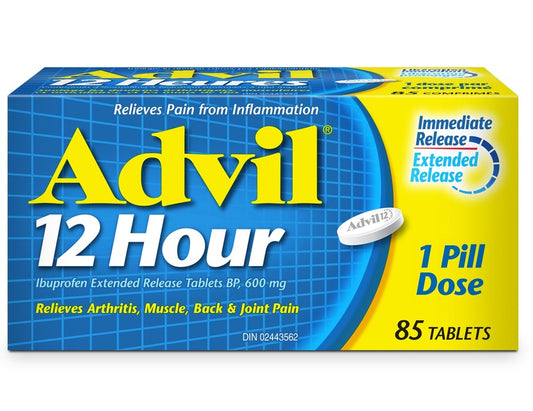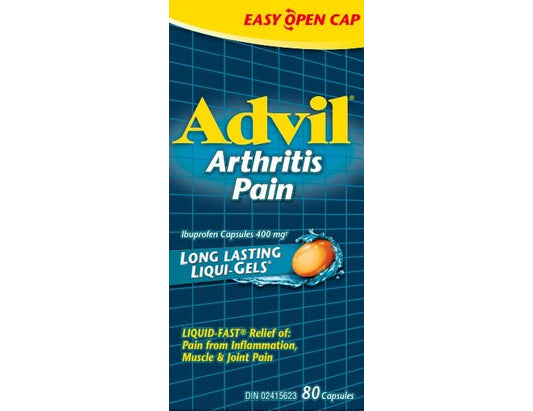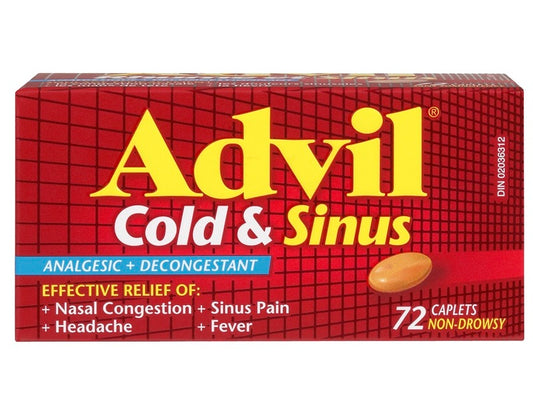Abdominal pain is a common experience, and when it settles in the lower right side, it can certainly raise concerns. From a mild, fleeting discomfort to a sharp, persistent ache, pain in this region can stem from a wide array of causes, some benign and easily managed, others requiring immediate medical attention. Understanding the potential origins of your pain and recognizing key symptoms is crucial for knowing when to seek professional help and when self-care might be appropriate.
Crucial Disclaimer: This article provides general information and is not a substitute for professional medical advice. Always consult a healthcare professional for diagnosis and treatment of any pain.
In this comprehensive guide from Symington Pharmacy, we’ll explore the common causes of lower right abdominal pain, help you distinguish between different types of discomfort, and guide you on when it’s time to consult a doctor or head to the emergency room. We'll also offer practical home remedies and prevention strategies for milder concerns, along with insights into how Symington Pharmacy can support your journey to better health.
Understanding Your Lower Right Abdomen: Key Organs
The lower right side of your abdomen is a bustling neighbourhood of vital organs, each playing a critical role in your body's functions. When pain arises here, it's often due to an issue with one of these structures.

The primary organs located in this region include:
- Appendix: A small, finger-shaped pouch projecting from your large intestine. It's notorious for appendicitis when inflamed.
- Parts of the Large and Small Intestines: Specifically, the end of the small intestine (ileum), the beginning of the large intestine (cecum), and the ascending colon are all situated in this quadrant. Issues like gas, constipation, or inflammatory bowel conditions can affect these areas.
- Right Ureter: This tube carries urine from your right kidney down to your bladder. Kidney stones or infections in the ureter can cause pain that radiates to the lower right abdomen.
- Right Ovary and Fallopian Tube (in females): These reproductive organs are common sources of lower right abdominal pain unique to women.
Common Causes of Lower Right Abdominal Pain (Mild to Moderate Concerns)
Many instances of lower right abdominal pain are not life-threatening and can often be managed with home remedies or over-the-counter solutions. Recognizing the characteristics of these milder pains can help alleviate anxiety and guide your next steps.
Gas and Indigestion
One of the most frequent culprits behind abdominal discomfort, including pain in the lower right side, is trapped gas or indigestion. Symptoms often include bloating, cramping, and pain that may shift location or fluctuate in intensity. It often feels like a dull ache or a sharp, jabbing sensation that comes and goes. The good news is that gas pain is usually temporary and resolves on its own.

For relief, try gentle movement, avoiding gas-producing foods, and over-the-counter anti-gas medications. Explore our comprehensive Digestive Health & Probiotics range for products like Gas-X or general digestive aids that can help soothe these symptoms.
Constipation
When bowel movements become infrequent or difficult to pass, the accumulation of stool in the colon can lead to significant lower right abdominal pain. The pain might be a dull, constant ache accompanied by bloating and a feeling of fullness. Increasing your fibre intake, drinking plenty of water, and regular physical activity can often alleviate constipation.
For persistent constipation, you may consider a gentle laxative. Find relief with our selection of laxatives like Senokot or browse our broader digestion category for solutions.
Irritable Bowel Syndrome (IBS)
IBS is a common chronic disorder affecting the large intestine, characterized by abdominal pain, cramping, bloating, gas, and changes in bowel habits (diarrhea, constipation, or both). The pain can often be localized to the lower right abdomen and may fluctuate in severity. Management strategies for IBS often involve dietary changes, stress management, and sometimes medication.
Support your gut health with our probiotics and IBS relief products, which include options like IBgard, designed to help manage IBS symptoms.
Muscle Strain or Injury
Just like any other part of your body, the abdominal muscles can be strained or injured due to strenuous exercise, heavy lifting, or sudden movements. This type of pain is usually localized, sharp, and worsens with movement or touch. Rest and applying heat or cold can often help.
Urinary Tract Infection (UTI)
While UTIs typically cause pain in the lower central abdomen, a bladder infection can sometimes lead to discomfort radiating to the lower right side, particularly if the infection is impacting the right ureter or kidney. Other symptoms often include a burning sensation during urination, frequent urges to urinate, and cloudy or strong-smelling urine. If you suspect a UTI, it's important to consult a healthcare professional for diagnosis and treatment, as untreated UTIs can lead to more serious kidney infections.
Female-Specific Causes of Lower Right Abdominal Pain
Given the unique anatomy of the female reproductive system, several conditions specific to women can cause pain in the lower right abdomen. This is a crucial area to address, especially for individuals experiencing pain on the right side of the body.
Ovulation Pain (Mittelschmerz)
Many women experience a dull ache or sharp, sudden pain on one side of their lower abdomen during ovulation, which occurs mid-cycle. This pain, known as "mittelschmerz" (German for "middle pain"), is usually mild, lasts for a few hours to a day, and alternates sides each month depending on which ovary releases an egg.
Ovarian Cysts
Ovarian cysts are fluid-filled sacs that develop on an ovary. While most are harmless and resolve on their own, larger cysts or those that rupture can cause dull or sharp pain in the lower abdomen, potentially localized to the lower right side. Pain might also occur during intercourse or bowel movements.
Endometriosis
Endometriosis is a condition where tissue similar to the lining of the uterus grows outside the uterus, often on the ovaries, fallopian tubes, and pelvic lining. This can lead to chronic pelvic pain, which may be localized to the lower right abdomen, especially during menstruation. Other symptoms include painful periods, heavy bleeding, and pain during intercourse.
Ectopic Pregnancy
Crucial Warning: An ectopic pregnancy is a medical emergency that requires immediate medical attention. This occurs when a fertilized egg implants outside the uterus, most commonly in a fallopian tube. If left untreated, it can be life-threatening. Key red flag symptoms include sharp, sudden, or persistent pain in the lower abdomen (often one-sided), vaginal bleeding (which may be different from a normal period), dizziness, fainting, and shoulder pain. If you are pregnant or could be pregnant and experience these symptoms, seek emergency medical care immediately.
For information and products related to Women's Health, visit our dedicated category at Symington Pharmacy.
Serious Causes of Lower Right Abdominal Pain (When to Seek Immediate Medical Attention)
While many causes of lower right abdominal pain are benign, some indicate serious conditions that require urgent medical intervention. Recognizing these red flags is vital.
Appendicitis
Appendicitis is the inflammation of the appendix and is a common medical emergency. The pain typically starts as a dull ache around the belly button (periumbilical pain) and then shifts and intensifies in the lower right abdomen, often becoming a sharp pain lower right abdomen. It worsens with movement, coughing, or sneezing. Other symptoms include loss of appetite, nausea, vomiting, constipation or diarrhea, and a low-grade fever. If you suspect appendicitis, seek immediate emergency care.
Kidney Stones
Kidney stones can cause severe, sharp, and often spasmodic pain that starts in the back or side and radiates down to the lower abdomen and groin, including the lower right side. The pain can be excruciating and is often accompanied by blood in the urine, nausea, vomiting, and a frequent urge to urinate.
Diverticulitis
Diverticulitis occurs when small, bulging pouches (diverticula) in the digestive tract become inflamed or infected. While it commonly affects the left side of the abdomen, it can also occur on the right, causing a constant, severe pain. Symptoms can also include fever, nausea, vomiting, and changes in bowel habits.
Hernia (Inguinal)
An inguinal hernia happens when a portion of the intestine or fatty tissue protrudes through a weak spot in the abdominal wall, often in the groin area, which can extend to the lower right abdomen. It may present as a bulge that becomes more noticeable with coughing, straining, or standing. Pain can range from a dull ache to a sharp, burning sensation, especially if the hernia becomes incarcerated (trapped) or strangulated (blood supply cut off), which are medical emergencies.
Testicular Torsion (for males)
Though less common, for males, severe lower abdominal or groin pain could indicate testicular torsion, a condition where the testicle twists, cutting off its blood supply. This is an extremely painful medical emergency requiring immediate attention to prevent permanent damage.
When to Seek Medical Attention
Understanding when to consult a doctor versus seeking emergency care is paramount.
Go to the Emergency Room Immediately If:
Do not hesitate to seek emergency medical attention (call 911 in Canada or go to your nearest emergency room) if you experience lower right abdominal pain accompanied by any of the following red flags:
- Sudden, severe, or rapidly worsening pain.
- Pain accompanied by high fever (over 38.5°C or 101.3°F) and/or chills.
- Persistent nausea and vomiting, especially if you cannot keep liquids down.
- Blood in your stool (black, tarry, or bright red) or urine.
- A rigid, hard, or very tender abdomen.
- Dizziness, lightheadedness, or fainting.
- Pain after a recent injury or trauma to the abdomen.
- Any suspicion of an ectopic pregnancy (if you are pregnant or could be pregnant) or appendicitis.
- Difficulty breathing or chest pain accompanying abdominal pain.
Consult Your Doctor (Non-Emergency) If:
Make an appointment to see your family doctor or visit a walk-in clinic if your lower right abdominal pain presents with these characteristics:
- Pain persists for more than a few days without improvement.
- Pain is recurrent, even if mild.
- The pain interferes with your daily activities or sleep.
- New or unusual symptoms accompany the pain (e.g., unexplained weight loss, changes in bowel habits).
- You are concerned and need a professional diagnosis, even if symptoms seem mild.
- For Canadians, consider calling a provincial health line like 811 for advice if unsure about immediate steps.
Diagnosis and Treatment Approaches
How Doctors Diagnose Abdominal Pain
When you consult a healthcare professional for lower right abdominal pain, they will conduct a thorough examination and may order various tests to pinpoint the cause. This often includes:
- Physical Exam: Checking for tenderness, swelling, and listening to bowel sounds.
- Medical History: Asking about your symptoms, past medical conditions, and medications.
- Blood Tests: To check for signs of infection (e.g., elevated white blood cell count) or inflammation.
- Urine Tests: To detect UTIs, kidney stones, or other urinary issues.
- Imaging Tests: Such as ultrasound (common for gynecological issues or appendicitis), CT scan (provides detailed images of abdominal organs), or X-rays.
General Treatment Overview
The treatment for lower right abdominal pain is highly dependent on its underlying cause. It could range from:
- Antibiotics for bacterial infections (like UTIs or diverticulitis).
- Pain relievers for managing discomfort.
- Lifestyle modifications for conditions like IBS or constipation.
- Surgery for emergencies like appendicitis or complicated hernias.
Home Remedies and Self-Care Tips for Mild Pain
For mild lower right abdominal pain, certain home remedies and self-care strategies can provide relief. Always remember to consult a doctor if your pain persists or worsens.

- Heat Therapy: Applying a warm compress or heating pad to the affected area can help relax muscles and ease cramping. Find effective heat relief products here.
- Hydration: Drinking plenty of water is essential, especially if constipation or dehydration is a contributing factor.
- Dietary Adjustments: For gas or indigestion, try eating bland, easy-to-digest foods and avoid potential triggers like fatty, spicy, or gassy foods.
- Rest: Allow your body to recover, especially if muscle strain or general fatigue is contributing to the pain.
-
Over-the-Counter Pain Relief: For general discomfort, acetaminophen (like Tylenol) or ibuprofen (like Advil) can help. Always follow dosage instructions and reiterate the disclaimer about consulting a doctor if pain persists or worsens, especially before taking medication.
- Shop Advil products
- Shop Tylenol products
- Explore our broader range of Pain & Fever Relief options.
- Probiotics: For digestive health, particularly with conditions like IBS, probiotics can help balance gut flora. Discover our range of Probiotics.
Prevention Strategies
While not all causes of lower right abdominal pain are preventable, adopting a healthy lifestyle can significantly reduce your risk for many common issues:
- Balanced Diet: Incorporate plenty of fibre-rich foods like fruits, vegetables, and whole grains to promote regular bowel movements and prevent constipation.
- Adequate Hydration: Drink sufficient water throughout the day to support digestive health and kidney function.
- Regular Exercise: Physical activity can stimulate digestion and help prevent gas and constipation.
- Stress Management Techniques: Stress can exacerbate digestive issues like IBS. Practicing mindfulness, yoga, or meditation can be beneficial.
- Regular Check-ups: Routine visits to your healthcare provider can help detect and address potential health issues early.

Conclusion
Lower right abdominal pain is a symptom that demands careful attention. While many causes are benign, ranging from common gas and constipation to specific female-related conditions, some are serious medical emergencies like appendicitis or ectopic pregnancy. Understanding the accompanying symptoms and the type of pain (sharp, dull, constant, intermittent) is crucial for identifying the cause.
Always seek immediate emergency medical attention for severe, sudden, or worsening pain, especially if accompanied by red flags like fever, persistent vomiting, or blood in stool/urine. For milder or persistent concerns, consulting your doctor for a professional diagnosis and treatment plan is essential.
Symington Pharmacy is your trusted resource for reliable health information and convenient access to a wide range of products that can help manage mild symptoms and support your overall well-being. We empower you to listen to your body and never hesitate to seek professional medical advice when needed.
Key Takeaways:
- Lower right abdominal pain can stem from various sources, ranging from benign issues like gas and constipation to serious conditions like appendicitis.
- Understanding the accompanying symptoms and the type of pain (sharp, dull, constant, intermittent) is crucial for identifying the cause.
- Always seek immediate emergency medical attention for severe, sudden, worsening pain, especially if accompanied by fever, persistent vomiting, or blood in stool/urine.
- Female-specific conditions like ovulation pain, ovarian cysts, and ectopic pregnancy are important considerations.
- For mild symptoms, home remedies and over-the-counter products can offer relief, but professional medical advice is essential for proper diagnosis and treatment of persistent or concerning pain.
Shop All Pain & Fever Relief Products at Symington Pharmacy today to manage your discomfort effectively.
Have questions or need personalized advice about your health concerns? Contact our pharmacists at Symington Pharmacy directly – we're here to help.
Stay informed with more health tips and exclusive offers – Sign up for our newsletter!




